Opal Tower interim report reveals design and construction issues
An interim report found the Opal Tower was ‘structurally sound’ but suspicious residents say no engineer has declared it safe for reoccupation.
Residents of Sydney’s Opal Tower are resisting pressure to move back into the building that has been evacuated twice since cracks were found on Christmas Eve.
An interim report released by the NSW Government has found a number of design and construction issues that likely caused the damage to the apartment building.
While the viability of residents re-entering the building was “beyond the scope” of the investigation, University of NSW dean of engineering Mark Hoffman told reporters that residents may want to investigate issues in the report before moving back in.
Prof Hoffman was one of the three engineering academics who produced the report for the NSW Government.
“We’ve outlined some matters that should be checked before residents should wish to move back in and we would recommend that they have those matters investigated and checked,” he told reporters.
RELATED: Bargain hunters offer just $1 for Opal Tower units
RELATED:Residents furious after belongings moved without permission
The government has not advised residents it is safe to return, despite builder Icon Co now suggesting most could move back in.
Chair of the building’s body corporate, Shady Eskander said “pressure is now coming back to us (residents) to go back into the building”.
“We require (builder) Icon to continue to put us up for maybe another month or two in order for the process … to be respected,” he said.
“This building has not been, by any engineer, declared safe for reoccupation.”

The NSW Planning Minister Anthony Roberts said whether residents retuned to the building was a matter for the residents and the builder.
“I completely understand the residents’ reluctance in some cases to move back in into what is essentially going to be, for some time, a building site,” he said.
Mr Eskander, who is taking time off from running his pharmacy business to deal with the issues on behalf of residents, said they did not want to return until problems had been fixed and independent engineers had signed off in writing that it was safe.
“We have suffered,” Mr Eskander said. “I can say on behalf of all the owners, people were buying into the Australian dream and unfortunately this has become an Australian nightmare for us.”
Mr Eskander also slammed developer Ecove, who had been “very quiet”.
“We’ve been very disappointed with them because we did purchase from Ecove, we did not purchase from (builder) Icon,” he said.
After the report was released, Ecove released a statement from director Bassam Aflak.
“We thank the government for the preliminary findings of its independent investigation into Opal Tower,” the statement said. “Our first thoughts are for the welfare of the residents. We need this problem to be fixed, and the residents deserve to be in their homes.”
ISSUES IDENTIFIED IN INTERIM REPORT
An interim report has found a number of design and construction issues that likely caused the damage to Sydney’s Opal Tower.
While the building was overall structurally sound and not in danger of collapse, some parts of the building were different to the design drawings or expected standards.
One difference included that precast concrete panels were larger than the hob beams they were sitting on by 20mm, instead of being the same size as dictated by the original design drawings.
Some of the hob beams on Level 10 and Level 4 also had bearing capabilities that “indicate factors of safety lower than required by standards”. The report said it needed more details about the design analysis to further consider this factor.
While the report found a number of issues it was not yet clear which one of these led to cracking in the building, which will need “significant rectification works”.
“While we have isolated the probable cause to localised structural design and construction issues, we need more information to make definitive conclusions about the cause or causes of the damage to this structure and the proposed rectification,” the authors of the report said.
“More work is also needed before we can provide recommendations on what needs to happen to avoid incidents like this in the future.”
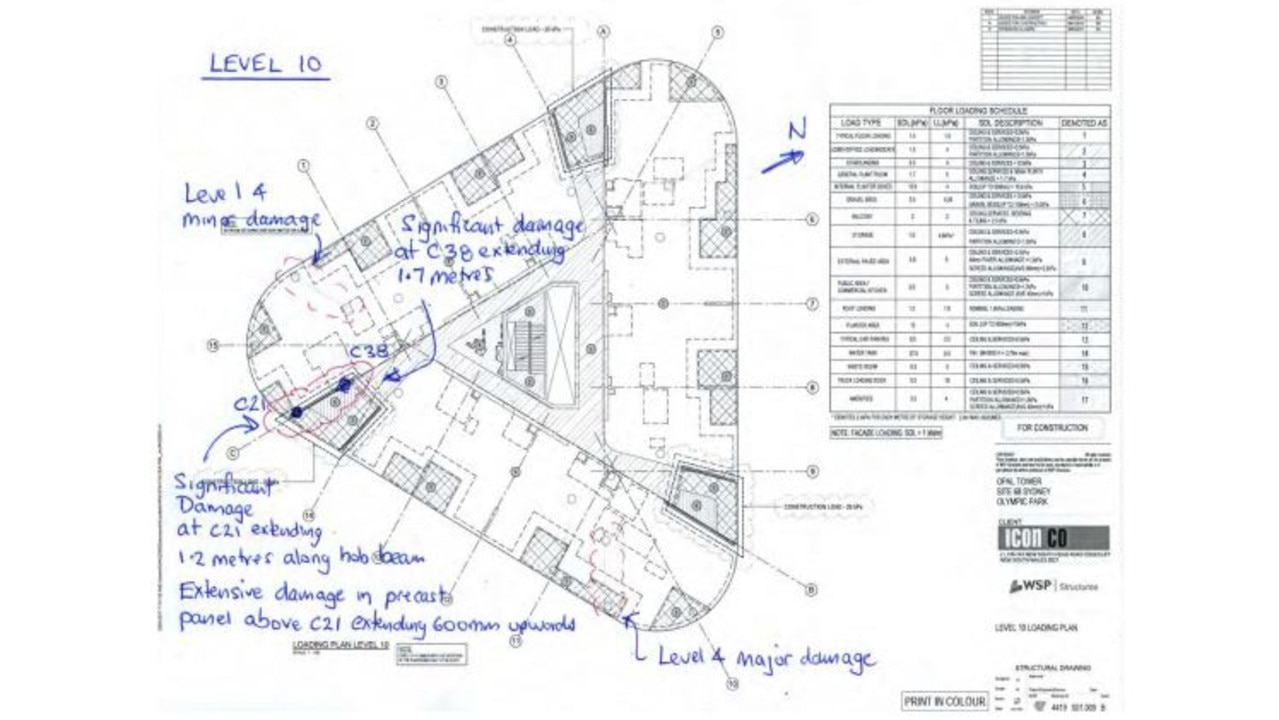
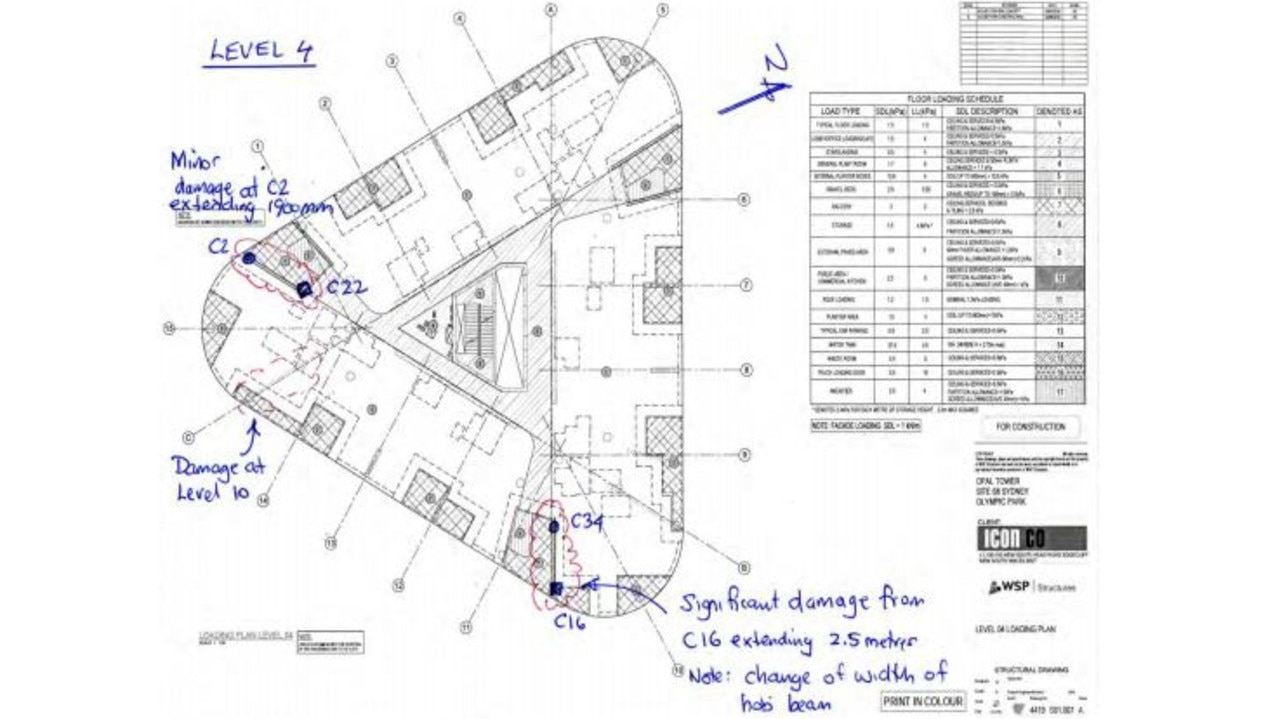
The report produced by Prof Hoffman, emeritus professor at the University of Newcastle’s School of Engineering John Carter and UNSW Professor Stephen Foster, was released by the NSW Planning Minister at a media conference today.
The report found it was highly unlikely that environmental factors such as heavy rain contributed to the damage and there was no evidence poor quality materials used in construction were a factor.
The report also ruled out problems with the foundations as they were inspected by a certified geotechnical engineer and inspections didn’t reveal cracking in the lower levels of the building, which would have been expected if this was the issue.
However, it did find some issues with the design and construction.
This included that the bearing capabilities of the hob beams on Level 10 and Level 4 did not meet required standards.
Construction issues identified include that grouting was not done in the way the design drawings suggested, a dowel bar was incomplete, precast concrete panels were not the same width as the hob beam they were resting on and “compelling evidence” that the wrong size reinforcing bars were placed in one panel.
The authors believe a combination of design and construction issues led to the failure of the hob beam on Level 10 and the structural damage.
“It is likely that the damage occurred after progressive build-up of load on the structure as apartments became occupied,” the report said.
The cause of the damage on Level 4 is still being assessed.
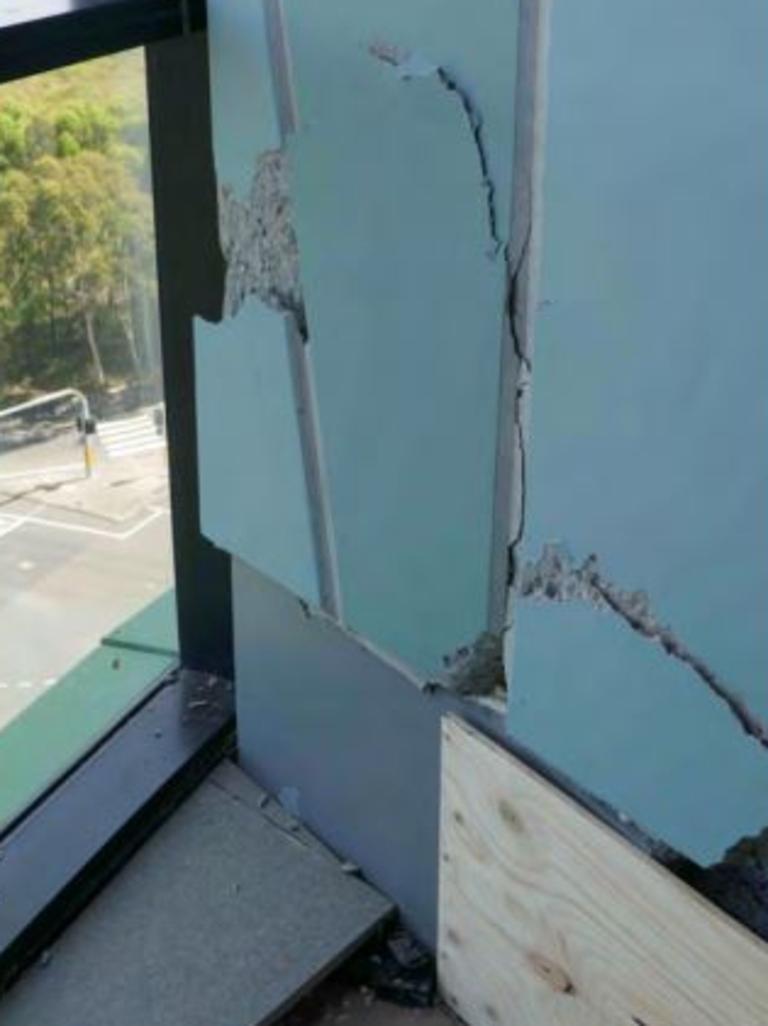

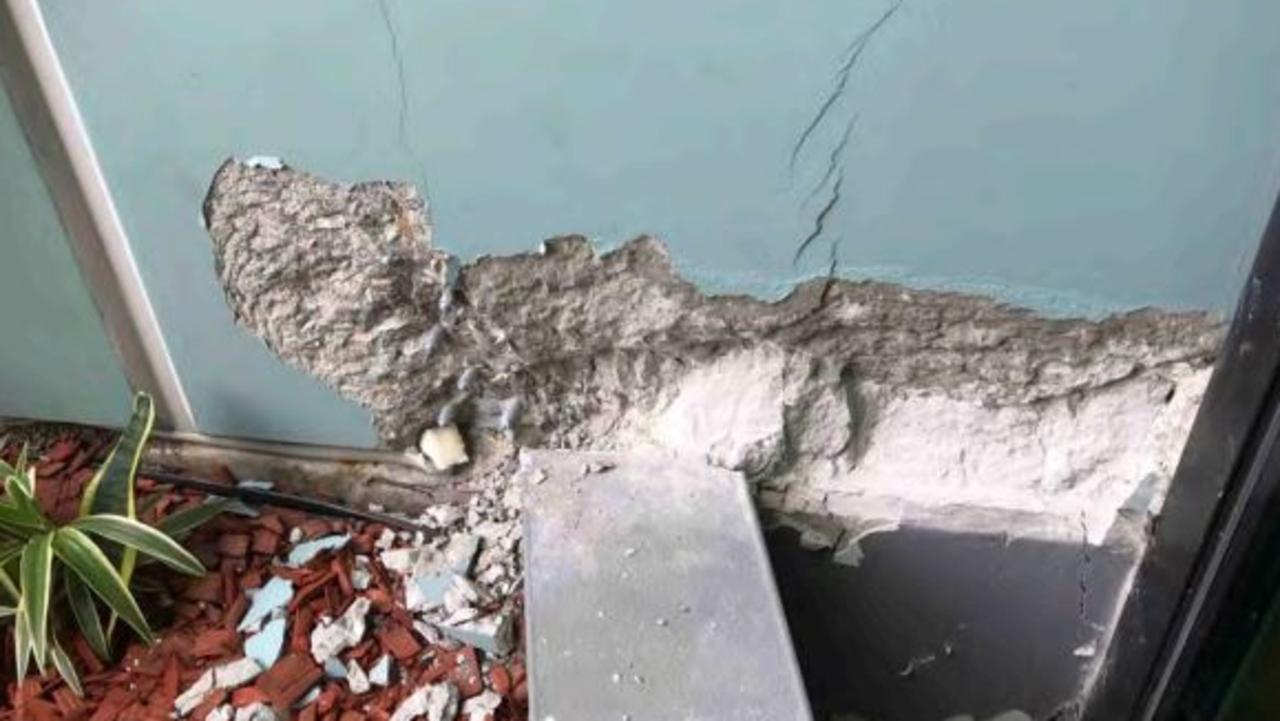
Significant works are required to repair and strengthen the damaged hob beams and in some cases the panels that rest on them.
The authors say that proposed works to fix the problems on levels 4 and 10, suggested by structural engineer WSP, were sound in principle but they had yet to receive any structural analysis for the works.
“We recommend that WSP’s detailed plans for the proposed rectification works should be checked by an independent qualified structural engineering organisation,” the report said.
Professors Hoffman and Carter were appointed by the NSW Government to investigate the problems at the building.
There is reportedly significant disagreement between the experts investigating the causes of the problems.
According to The Australian one theory to explain the damage included that the grade of reinforced concrete used for the support beams was not strong enough.
There are four different investigations into what caused the cracking of concrete panels that sparked two evacuations of the 300 residents living in the Sydney Olympic Park building.
The apartment’s body corporate has also hired an engineering firm Cardno to look into the problems and builder Icon Co has engaged Rincovitch Partners.
WSP, the original structural engineer involved in the project, is also investigating.
News.com.au asked WSP whether structural drawings for the project had been prepared and signed off but a spokeswoman said “we are not in a position to answer your inquiry”.
When news.com.au asked to speak to a media representative at private certifier McKenzie Group Consulting, the woman who answered the call said “absolutely not” before hanging up. In a follow-up call she said: “sorry but we’re not interested”.
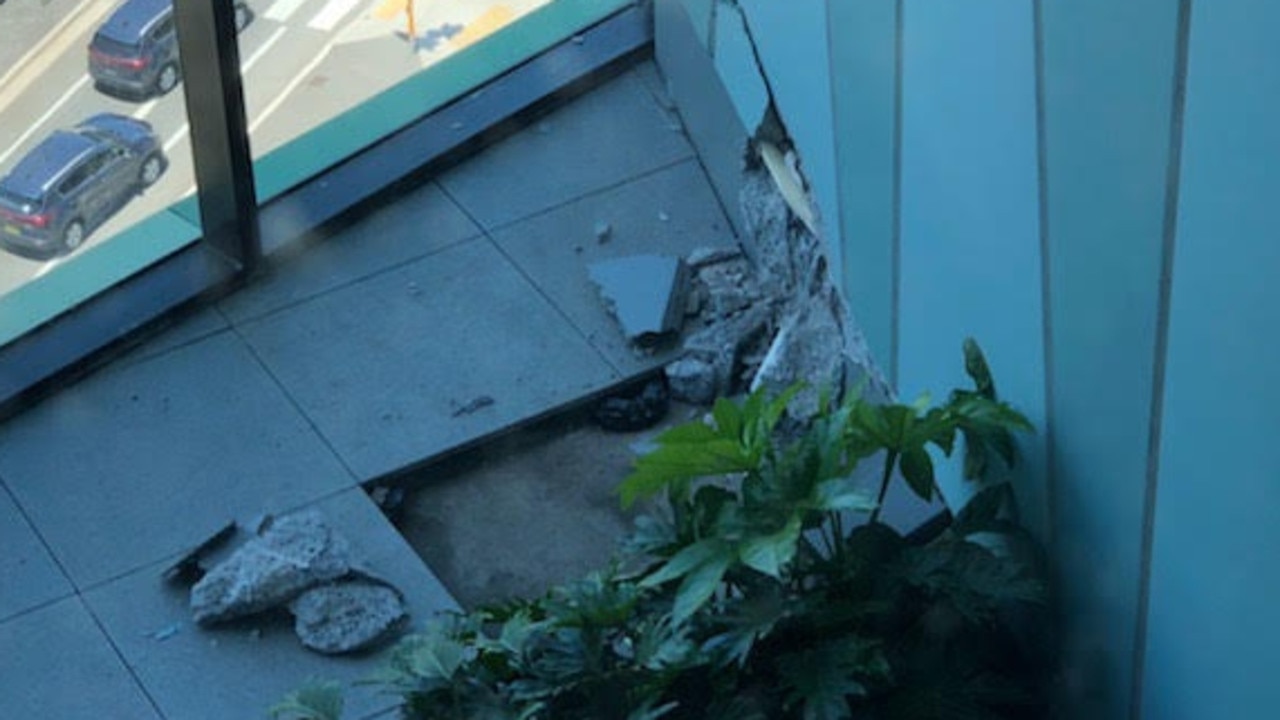
A previous statement issued by professors Hoffman and Carter updating progress on their investigation said initial assessments found no evidence of any issues with the foundations of the building, though “we believe that there are a number of design and construction issues that require further investigation”.
Angry owners have demanded answers from Icon, the builder of the new Sydney Olympic Park tower, as questions remain over whether the building is safe to be reoccupied after cracks were found on Christmas Eve.
RELATED: Report exposed big problems into building and construction industry
RELATED: Flawed process that approved Opal Tower
Despite being told most people could return home, one resident says they haven’t received any written approval and “it’s not officially safe to move back in”.
A fiery meeting on Saturday afternoon went on for more than three hours, as owners were given their first chance to properly question Icon since the tower was evacuated on December 24.
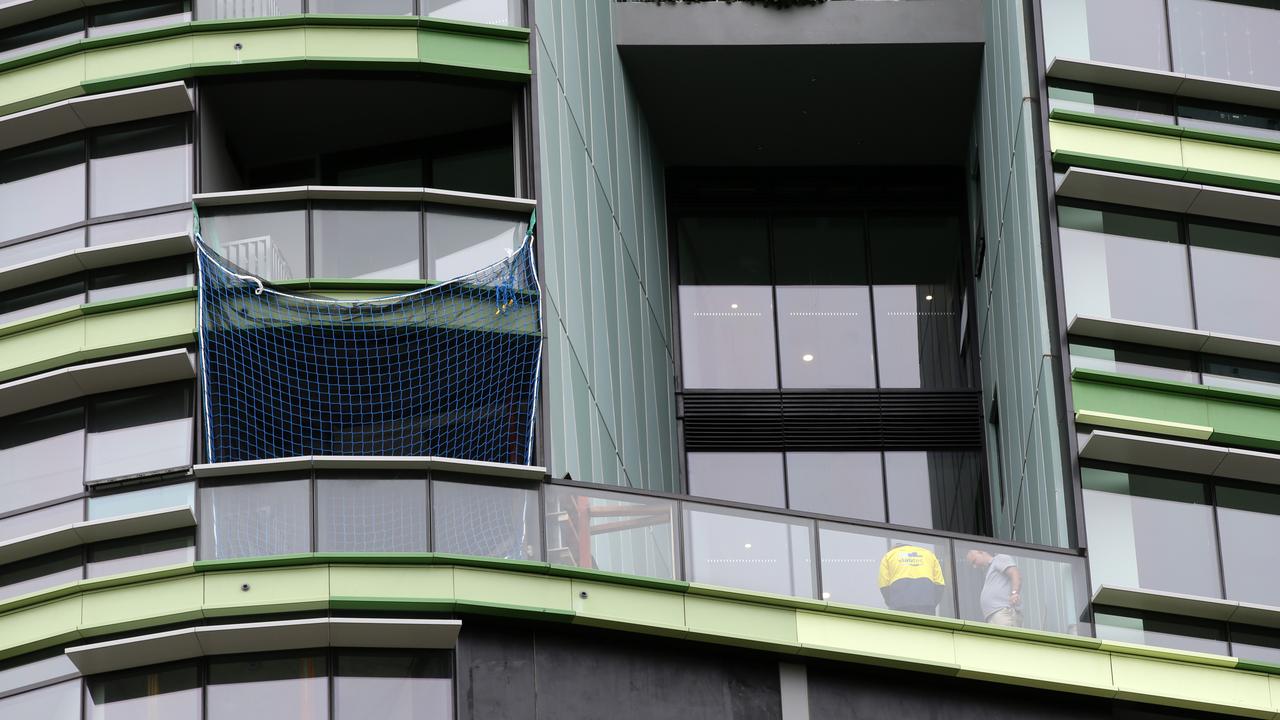

Icon has extended its reimbursement timeline, for costs associated with residents’ displacement, until Wednesday, but one resident told AAP there’s a good chance this will be extended again.
While two engineering experts, commissioned by the state government to investigate the tower, have said the building is structurally sound, engineers contracted by the body corporate said it was “reluctant to recommend that residents return at an early stage”.
The building’s strata committee has urged residents not to move back in until all experts looking into the Opal issues state in writing that it is safe to do so.
As confusion continued over their return home, owners took one step closer towards mounting a class action after receiving a quote from Maurice Blackburn lawyers.
The law firm has confirmed if the case proceeds they plan to run on a “no win no fee” basis, and if residents are successful they will have around $6.2 million deducted for legal costs.
“These cases are difficult, often take several years to resolve, and are against powerful and rich defendants who use top tier and expensive law firms,” a spokeswoman said.

— With AAP
Continue the conversation @charischang2 | charis.chang@news.com.au




